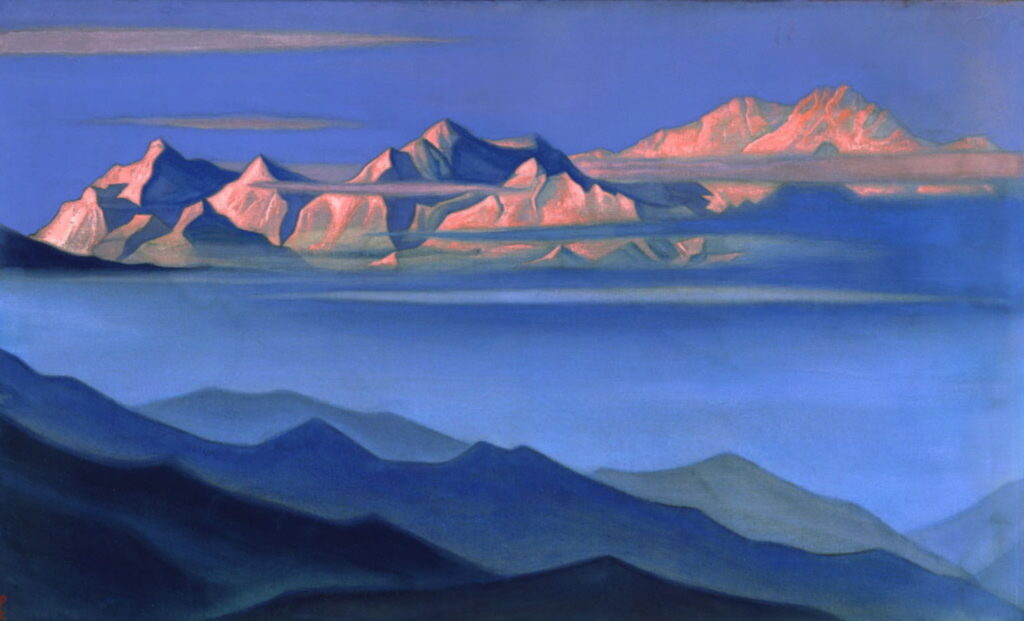The best of 2023’s paintings and articles: 3

In the second half of last year, I launched several new series on paintings. This article looks at those and some other articles that you may have missed, or might simply enjoy revisiting, before we rush headlong into 2024.
In case you never thought of Rubens as an animal artist, around 1614-16 he painted a series of hunting scenes featuring big game, possibly with the help of the animalière Frans Snyders. Eugène Delacroix became fascinated by them, even though he probably never saw the original paintings, but had to make do with etchings of them made by Soutmans. What’s perhaps most remarkable about this series is that each has been painted purely from the artist’s imagination.
While they undoubtedly used images of the wild animals concerned, neither Rubens nor Delacroix could ever have seen any of these hunts, even if they had actually taken place. At this time, the furthest that Rubens had travelled had been to Italy, and he never visited a country in which these large animals lived in nature. At least it meant that no animals were harmed in the process.
Peter Paul Rubens (1577–1640), The Lion Hunt (c 1621), oil on canvas, 249 x 377 cm, Alte Pinakothek, Munich, Germany. Image by MrArifnajafov, via Wikimedia Commons.
Rubens painted this later version of The Lion Hunt in 1621, and it became Delacroix’s favourite for its confusion and fearful conflict. Although considerably less busy than his Tiger Hunt, its diagonal is formed from the chaos of falling bodies, horses and impaled lions.
Paintings of Eugène Delacroix: 11 Rubens and his hunts
Delacroix had drawn inspiration from Géricault’s Raft of the Medusa, and throughout his career returned repeatedly to motifs of shipwreck, including the survivors of the wreck of the Don Juan featured by Lord Byron.
Eugène Delacroix (1798–1863), Shipwreck off a Coast (1862), oil on canvas, 38.1 x 45.1 cm, Museum of Fine Arts, Houston, TX. Wikimedia Commons.
In the year before his death, Delacroix brought an end to that long series in this Shipwreck off a Coast (1862). At last the survivors of the Don Juan have made landfall and one of them is being rescued in the left foreground, amid extremely loose brushstrokes.
Paintings of Eugène Delacroix: 15 Final narratives
0 Contents and summary
Last year saw the centenary of the death of one of my favourite artists, Joaquín Sorolla, who with John Singer Sargent and Anders Zorn brought fine painting into the twentieth century.
Joaquín Sorolla y Bastida (1863–1923), Return from Fishing (1894), oil on canvas, 265 x 403.5 cm, Musée d’Orsay, Paris. WikiArt.
When you next visit the Musée d’Orsay in Paris, be sure to look out for Sorolla’s huge Return from Fishing (1894). This painting won a gold medal at the Salon the following year, and was bought for the French state.
Romantic though this may appear today, it is a precisely detailed account of the complex, strenuous, dangerous and above all primitive working conditions of the local fishermen of Valencia, who still used teams of oxen to haul their boats up the beach. While you’re relishing the warm sunlight filling the huge sail, consider how difficult this task is, and how dangerous it must have been to work with those powerful animals, and several tons of wooden boat hull, in wind and waves.
Centenary of the death of Joaquín Sorolla 1
Centenary of the death of Joaquín Sorolla 2
Centenary of the death of Joaquín Sorolla 3
In August, I started a new series showing paintings of mountains.
Nicholas Roerich (1874–1947), Kanchenjunga (1944), tempera on canvas, 91.4 x 152 cm, Roerich Museum, Moscow, Russia. Wikimedia Commons.
Nicholas Roerich painted this superb view of the distant Kanchenjunga in 1944, when he was living in India. This is the third highest mountain in the world, rising to 8,586 metres (28,169 feet), and wasn’t climbed until 1955. This view may have been painted in Darjeeling, and shows the mountain in the rich light of dusk. This peak is a holy place, and by convention those who climb it stop short of its summit in respect.
High: Introduction
A few days after starting that series, I finally succumbed to the many requests to relate Arthurian legends with their paintings. Distilling several hundred pages of Sir Thomas Malory’s Le Morte d’Arthur into meaningful episodes has proved a real challenge. His book had been largely forgotten until the middle of the nineteenth century, when it was reprinted and grew a considerable following, blossoming in the art of the Pre-Raphaelites.
In 1834, the Palace of Westminster, containing the Houses of Parliament, was destroyed by fire. Prince Albert, who had only been married to Queen Victoria for a year, was chairman of the Fine Arts Committee responsible for decorating the new palace. The established Scottish artist William Dyce suggested to the prince that the Queen’s Robing Room should be decorated with paintings from Malory’s book, and Dyce was commissioned in 1847 to paint them.
William Dyce (1806–1864), Piety: The Knights of the Round Table about to Depart in Quest of the Holy Grail (1849), watercolour and bodycolour over pencil on buff paper, laid down, 23.3 x 44 cm, Scottish National Gallery, Edinburgh, Scotland. Wikimedia Commons.
Dyce’s watercolour of Piety: The Knights of the Round Table about to Depart in Quest of the Holy Grail (1849) was a late study for this fresco for the Robing Room. It shows a melée of knights of the Round Table paying tribute to King Arthur and Queen Guenevere (at the right), as those knights prepare to depart on their quest for the Holy Grail, the legendary chalice used by Christ at the Last Supper before his crucifixion (or possibly a cup used by Joseph of Arimathea to collect Christ’s blood). It’s perhaps the Arthurian equivalent of Frith’s Derby Day.
Arthur: Introduction
In September, we celebrated the bicentenary of the birth of Alexandre Cabanel, one of the greatest teachers of painting in Paris of the nineteenth century.
Alexandre Cabanel (1823–1889), Napoleon III (c 1865), oil on canvas, dimensions not known, Musée du Second Empire, Compiègne, France. Wikimedia Commons.
Cabanel’s life-sized full-length portrait of the Emperor Napoleon III from about 1865 proved controversial, as many felt that his image of their emperor should have greater grandeur. Some critics even accused Cabanel of making him look like a hotel manager or waiter, and I can see their point. The Empress Eugenie and Napoleon’s family had no such qualms, though: Cabanel’s painting was hung in the Tuileries Palace, and when the Second Empire collapsed, and the empress fled to Britain, she took this painting with her into exile.
The bicentenary of Alexandre Cabanel: 1
The bicentenary of Alexandre Cabanel: 2
The bicentenary of Alexandre Cabanel: 3 Pupils
In the later part of the year, I completed a short series looking at intentional blur in paintings, where I drew attention to the few paintings that reproduce the depth of field effects seen in photographs.
Paul Louis Martin des Amoignes (1858–1925), In the Classroom (1886), oil on canvas, 68.5 × 110.5 cm, location not known. Wikimedia Commons.
Painted in 1886, Paul Louis Martin des Amoignes’ In the Classroom looks as if it may have been made from photographs. One boy, staring intently at the teacher in front of the class, is caught crisply, pencil poised in his hand. Beyond him the crowd of heads becomes more blurred.
Painting on the edge: Overview and contents
I have a deep interest in the depiction of stories in paintings, a subject that’s sadly out of fashion, and dismissed by so many critics since the twentieth century all but destroyed painting as an art. There are few examples of visual art changing widely known stories, but in November I showed the best example, of how Gustave Moreau’s painting of Salome achieved just that, even resulting in striptease dancing.
We don’t know exactly what motivated Gustave Moreau to paint a series of works culminating in the two paintings of Salome he exhibited at the Salon in 1876. He seems to have started work on them just prior to the outbreak of the Franco-Prussian War in 1870, and it may be that his long-standing interest in the femme fatale converged with his reading of Regnault’s portrait of Salome. Prior to these, the received account of the death of John the Baptist centred on his execution resulting from the spite of Herod’s wife Herodias, whose marriage John had condemned.
Moreau developed two different but related scenes in these paintings: one shows Salome as a dancer, and culminated in an oil painting of Salome during her dance in front of Herod, prior to the execution of John the Baptist; the other shows Salome and the floating, severed head of John, which I concentrate on here.
Gustave Moreau (1826–1898), The Apparition (1876-77), oil on canvas, 55.9 x 46.7 cm, Harvard Art Museums/Fogg Museum (Bequest of Grenville L. Winthrop), Cambridge, MA. Courtesy of Harvard Art Museums.
This slightly later oil version of The Apparition (1876-77) gives a better idea of the original effect of Moreau’s faded watercolour original, although it has slight differences in the position of the panther and its background.
Moreau’s new story of Salome and the execution of John the Baptist was well-timed. It coincided with a revival of interest in spectacular deaths and gruesome scenes, and the increasingly overt sexualisation which occurred in all the arts towards the end of the nineteenth century. In 1877, Gustave Flaubert published three short stories, including an extended account of the traditional biblical narrative with Herodias at its centre. The British writer Oscar Wilde was introduced to that by Walter Pater (philosophical leader of Aestheticism), and in 1884 Joris-Karl Huysmans’ À rebours was published, a novel including a description of Moreau’s Salome paintings.
Wilde’s one-act play Salome was first published in French in 1891, and was soon translated into English and German. Banned from public performance in Britain, it received its premier in Paris in 1896, but wasn’t performed in public in England until 1931. At the centre of Wilde’s play is the perversion of lust and desire in Salome.
After seeing Wilde’s play performed in Berlin in 1902, Richard Strauss resolved to turn it into an opera. He started work on this in the summer of the following year, and Salome was completed and premiered in 1905. A year later, the dancer and choreographer Maud Allan produced a show called Vision of Salomé in Vienna, featuring a notorious version of the Dance of the Seven Veils, Wilde’s title for the dance of Salome before Herod, also included in Strauss’s opera. The name quickly became a euphemism for a striptease, and the growing popularity of Salome as an erotic figurehead became named Salomania.
Who had John the Baptist killed? 1 Herodias
Who had John the Baptist killed? 2 Salome
Great visual artists are almost by definition obsessed with sight and vision, but Jean-Léon Gérôme was a master who expressed his obsession in paint and painted sculpture.
Jean-Léon Gérôme (1824–1904), The Artist’s Model (1895), oil on canvas, 50.8 x 39.6 cm, Dahesh Museum of Art, New York, NY. Wikimedia Commons.
In The Artist’s Model from 1895, Gérôme paints himself at work on his marble figure Tanagra (1890), which he had already included among the figurines in his earlier painting Sculpturae Vitam Insufflat Pictura. He thus painted himself making a sculpture which he had previously painted in a painting as a sculpture.
Scattered in the image are reminders of gladiatorial armour and other props used for his paintings, one of his paintings of Pygmalion and Galatea, together with one of his polychrome sculptures of a woman with a hoop, at the right edge. In this single image, Gérôme has captured much of his professional career. We will return to his paintings next year, to celebrate the bicentenary of his birth.
Gérôme’s Vision: Paintings about vision, truth and photography 1
Gérôme’s Vision: Paintings about vision, truth and photography 2
Finally, in one recent weekend I turned up three lesser-known facts about the development of Impressionism: how the small coastal town of Honfleur played an important role in its early development, how the Impressionist Adolphe-Félix Cals has been badly forgotten, and that Honfleur was the birthplace of Eugène Boudin, another of its key figures.
Adolphe-Félix Cals (1810–1880), Honfleur Alley (1877), oil on canvas, 43 x 59 cm, Private collection. The Athenaeum.
Félix Cals’ wonderful Honfleur Alley from 1877 has fine detail, but remains thoroughly Impressionist in style, and surely is one of the masterworks of this phase of French Impressionism.
Paintings of Honfleur: Corot to Monet
Paintings of Honfleur: Seurat to Vallotton
Next year we will also celebrate the bicentenary of the birth of Eugène Boudin.
I look forward to seeing you in 2024.




